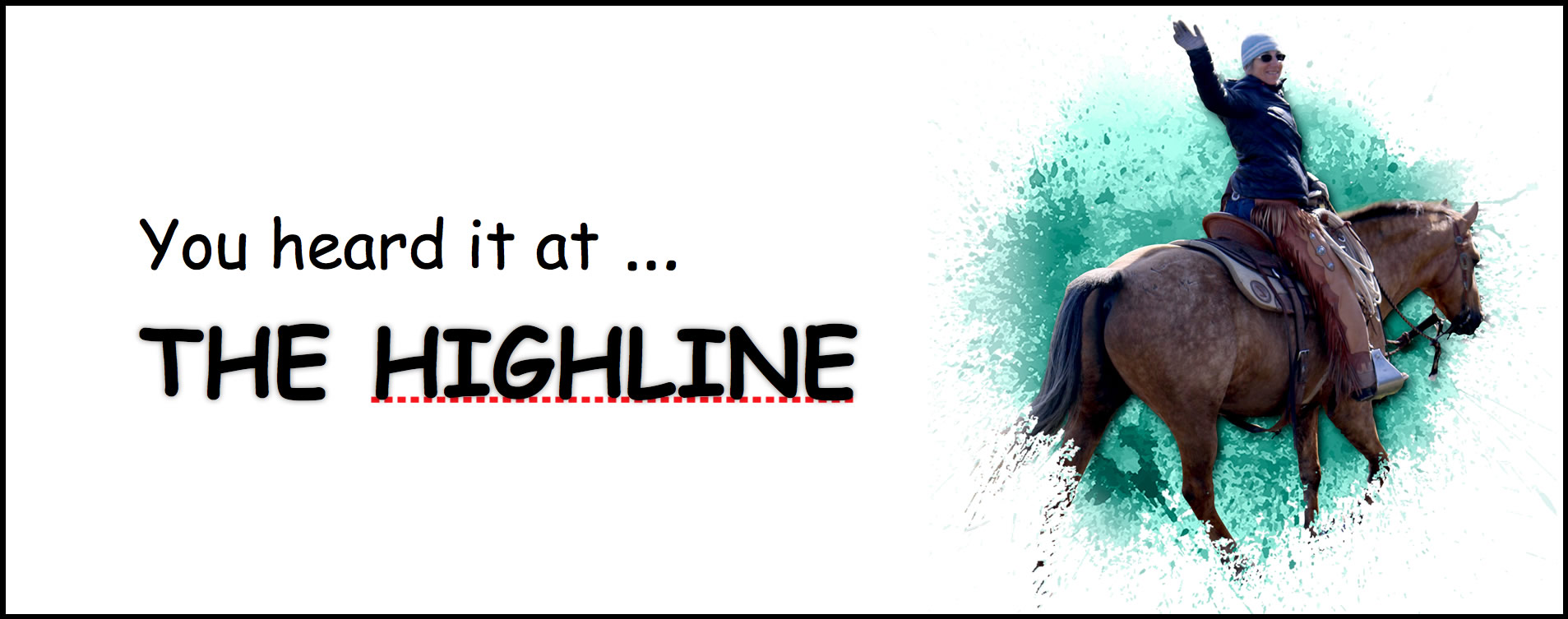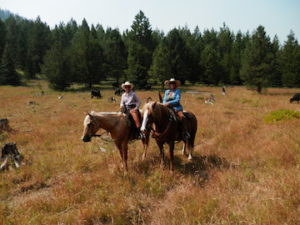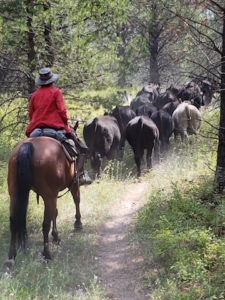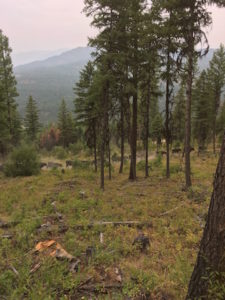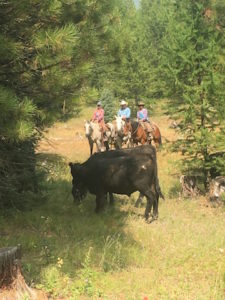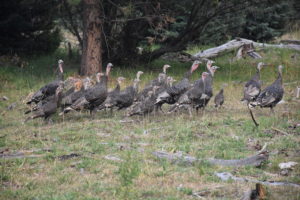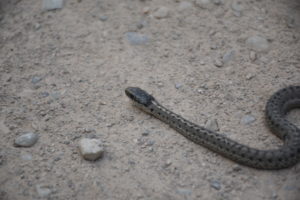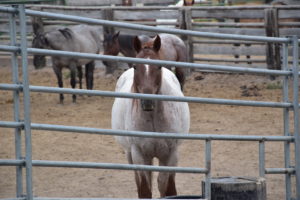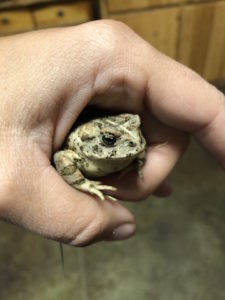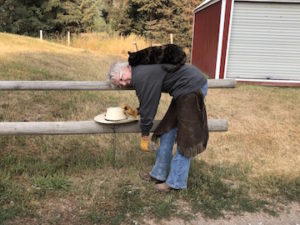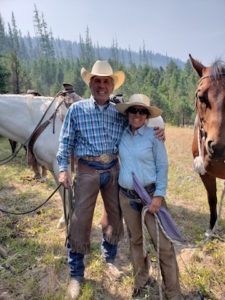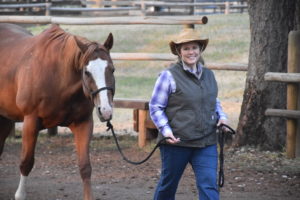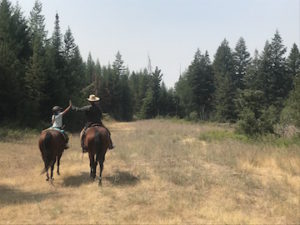August 18, 2018 – Volume 13 – Issue 32
Hi Everyone,
The big job this week was to find all of the cattle in the McKillop pasture and push them through the Elk Creek pasture onto Davis Mountain. This task was continued from last week and we were determined to find every steer before the weekend. Involved in the cattle finding were Genna (who celebrated her 11th birthday with us on Wednesday), Mary Jo, George, Danielle, Catherine, Ruth and Sherry. In mixed groups with Brenda, Scott, Jessie, Jenna, and Sue they spent the greater part of the week scouring the mountain to find all of the steers.
We finished the week joined by Roby who found the final 15 steers in McKillop. All of us were thrilled to have succeeded in bringing all of the cattle bringing a triumphant end to two weeks of gathering.
A lot goes into finding and moving cattle into a new pasture. We think constantly of where to block, where to push, and where to let off. What gets less attention is the importance of having a good count. Having a good count when moving cattle into a new pasture is vital – without one we don’t know if any are missing. If our count is accurate and comes up short then we can know that a steer might be injured, sick, or just outside the fence. If we aren’t absolutely sure how many cattle are in each location then we won’t know if they are all healthy.
Counting cattle can be challenging, as individual cattle are hard to distinguish from a sea of black bodies, heads, and legs. One of the worst places to count cattle seems to be from below them as they travel down a road – all you can see is a bunch of moving legs. By pushing the cattle gently we can get them traveling in a single file line making them far easier to count, especially from a vantage point above them. If they are traveling through a gate it is best to push them slowly one or two at a time with someone out of the way on the other side of the gate taking the count. Often we count our cattle three or four times just to be sure we are consistently getting the same number. Because we counted so well while moving cattle to Elk Creek and Davis we know how many we should see while checking cattle in the coming weeks and months.
This week was prime for not only cattle but wildlife sightings as well.
On Thursday, one of our cattle searching groups saw the black bear that has been frequenting the upper water tank on McKillop. Shortly after that they saw two skunks – one of which crossed the road right under Gunner’s nose! We were glad that neither felt too threatened, as we didn’t want them to spray us. They retreated to a burrow under the road.
On Friday, we saw several signs that a mountain lion was on McKillop. There were tracks in the dust along the sides of the road and the cattle, when we found them, seemed slightly panicked. We kept a close watch on them as we brought them from Elk Creek and were well prepared in case we saw one. Saturday, Scott saw a whole herd of elk in the Davis parking lot where they drank half of the water out of the tank there. Also seen this week were deer, frogs, and a whole flock of wild turkeys.
This week in horsemanship, Roby taught the first few days as Shayne and Des were out of town. Roby worked with guests of several different abilities and reviewed how to create energy and life in their horses. Without energy, there is nothing to direct, meaning you’ll struggle when trying to work on lateral movements, straight lines, transitions and really anything that requires movement of your horse’s feet. Shayne touched on these points as well as others when he was back teaching on Friday.
Once everyone improved in this area, fine-tuning the transitions came next. How prompt is your horse when you ask him to go from a walk to trot, to a trot to a canter, or back down to a good, lively, walk? Counting strides can help you be honest with yourself, and accurate about whether or not you are both improving. It was fun to see everyone working hard at these components all while getting a soft feel and lightness in their horses! Being able to control rate at different gaits and transitions allows riders to be able to do a job with their horses, like moving cattle, in an efficient way- too much energy might ‘spill the cattle’ and too little will have them stopping whenever the green pastures capture their attention!
All in all there was a lot of good riding these week- hats off to everyone for all of their diligence and hard work.
Until next week,
Jessie & Janice

